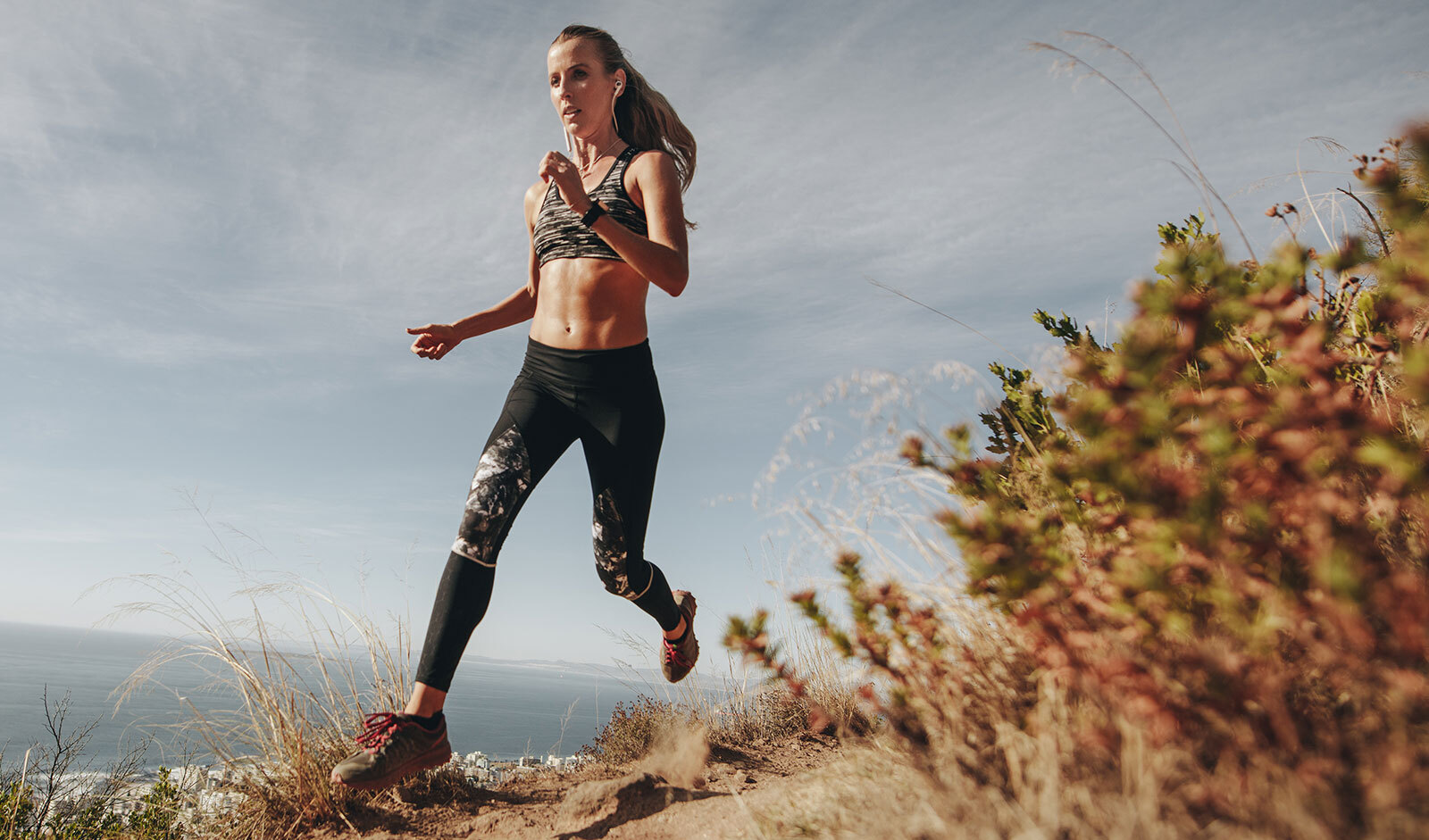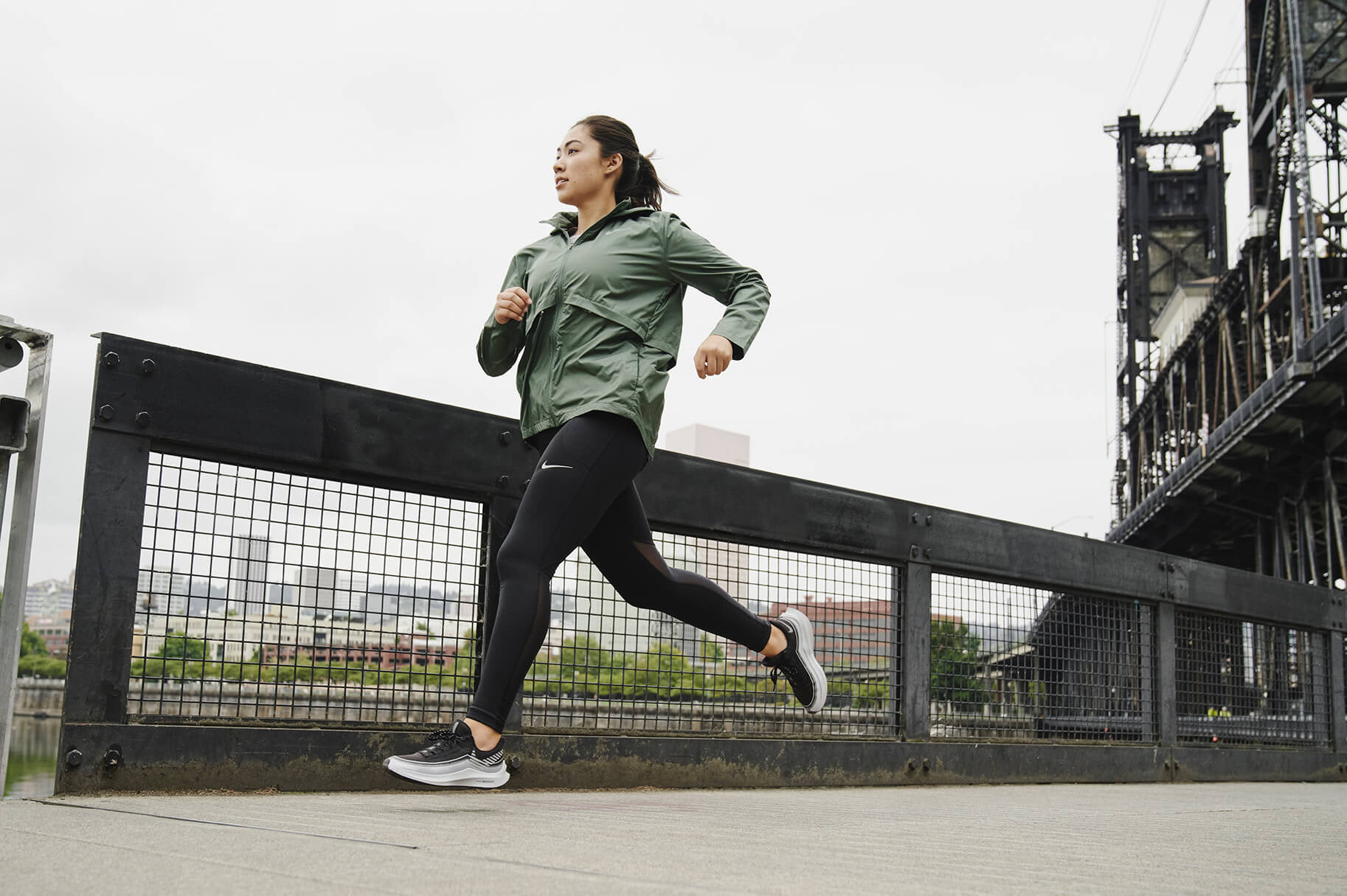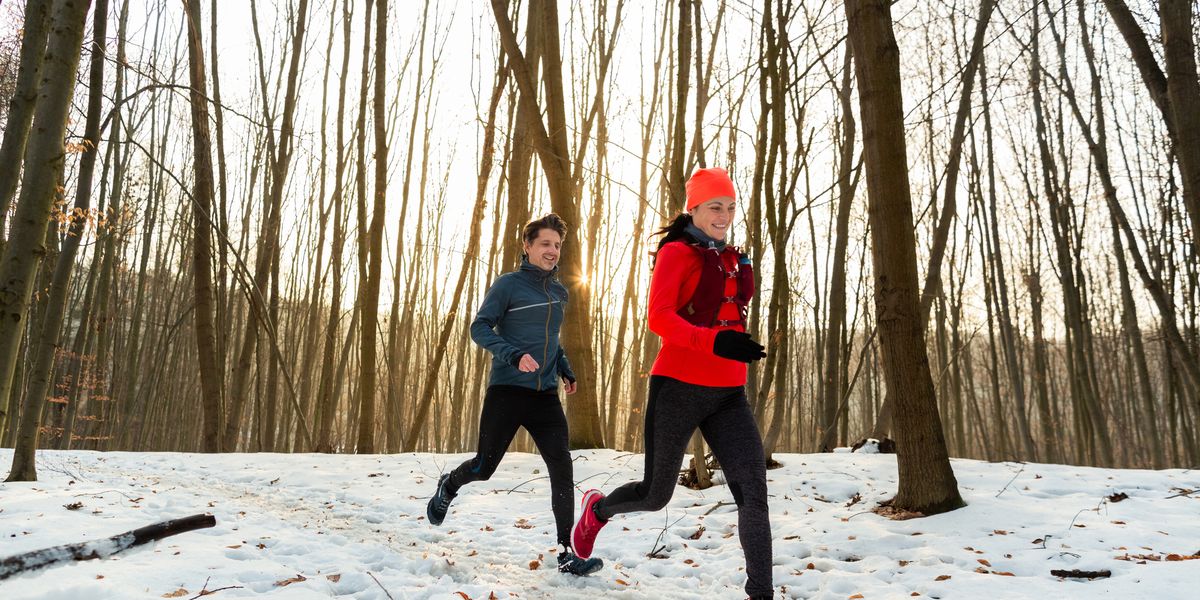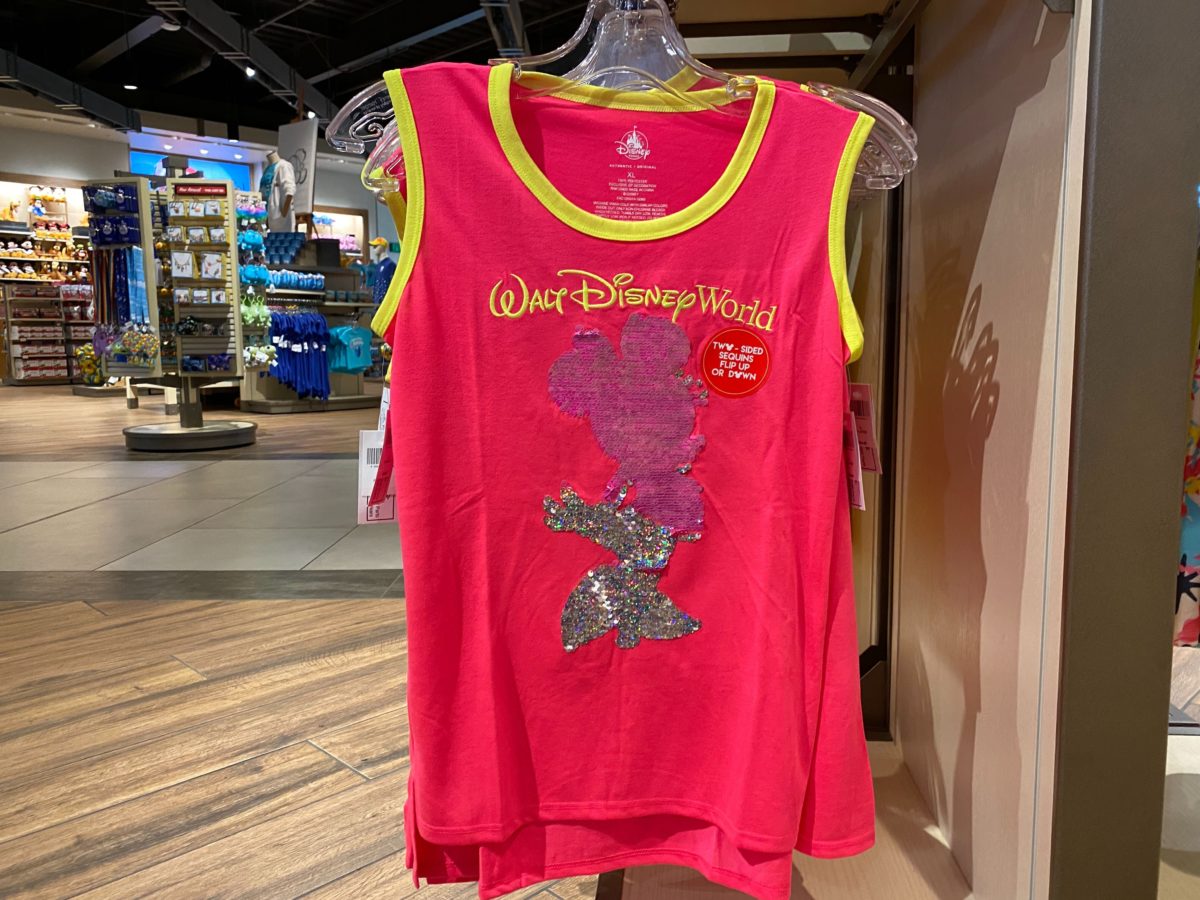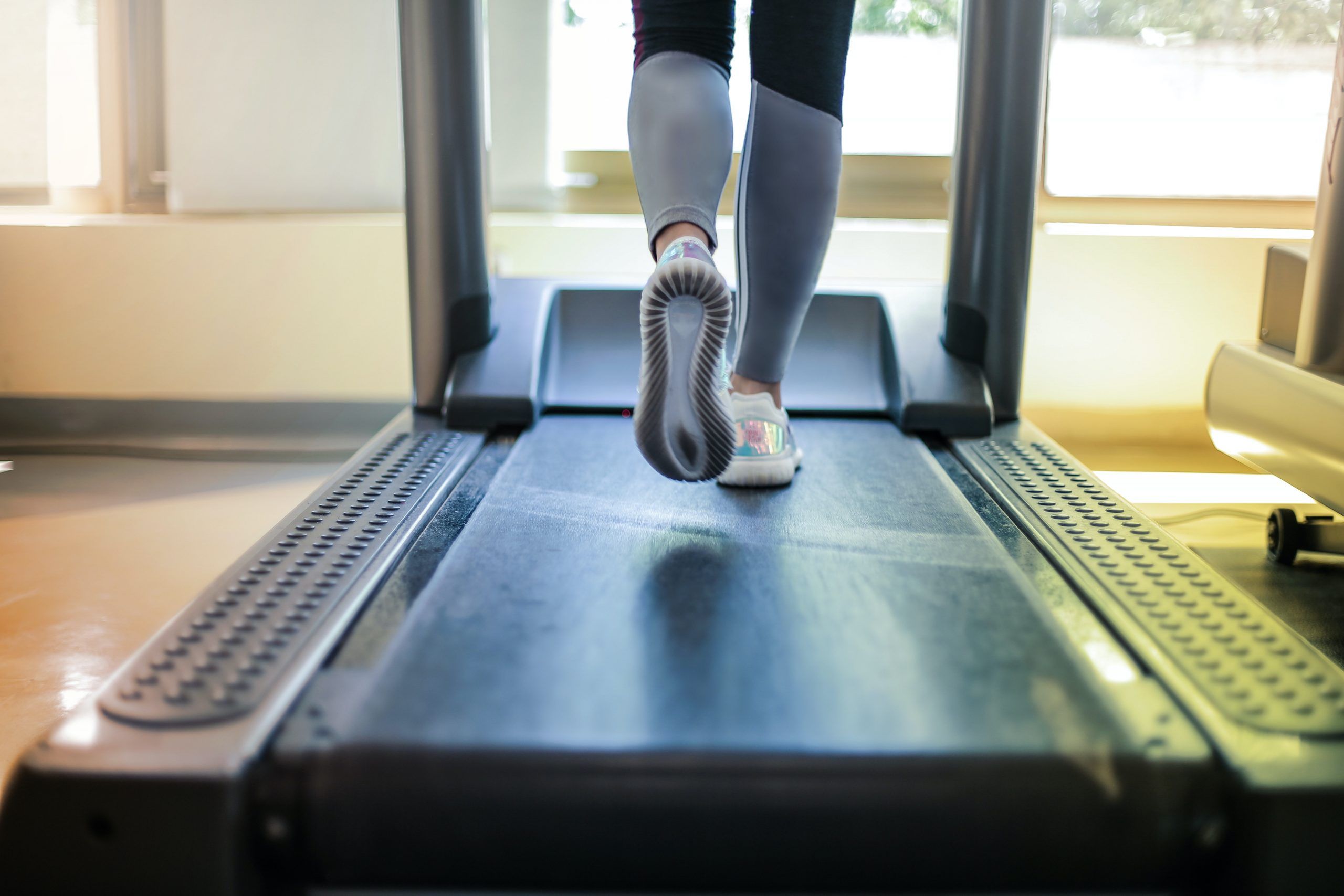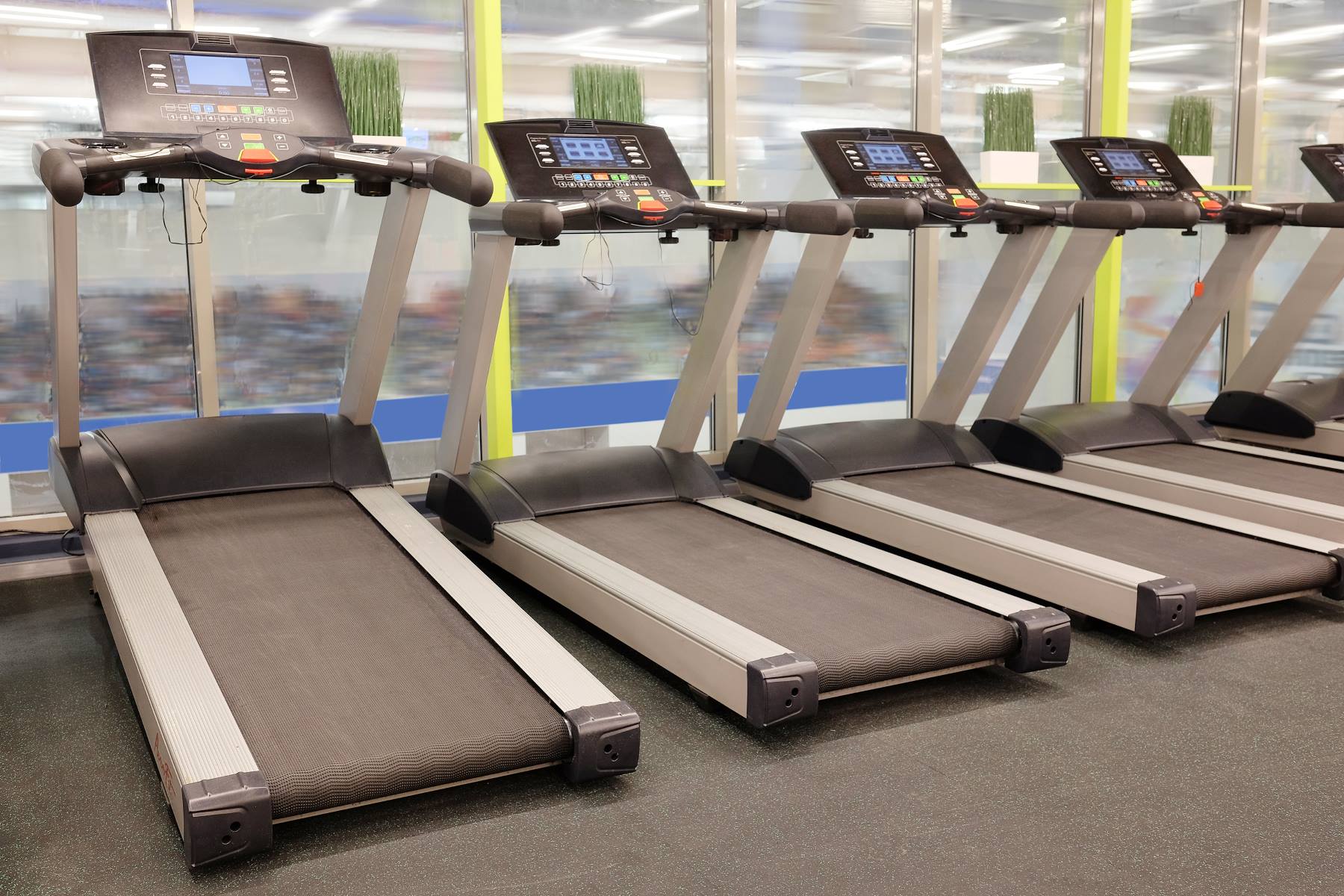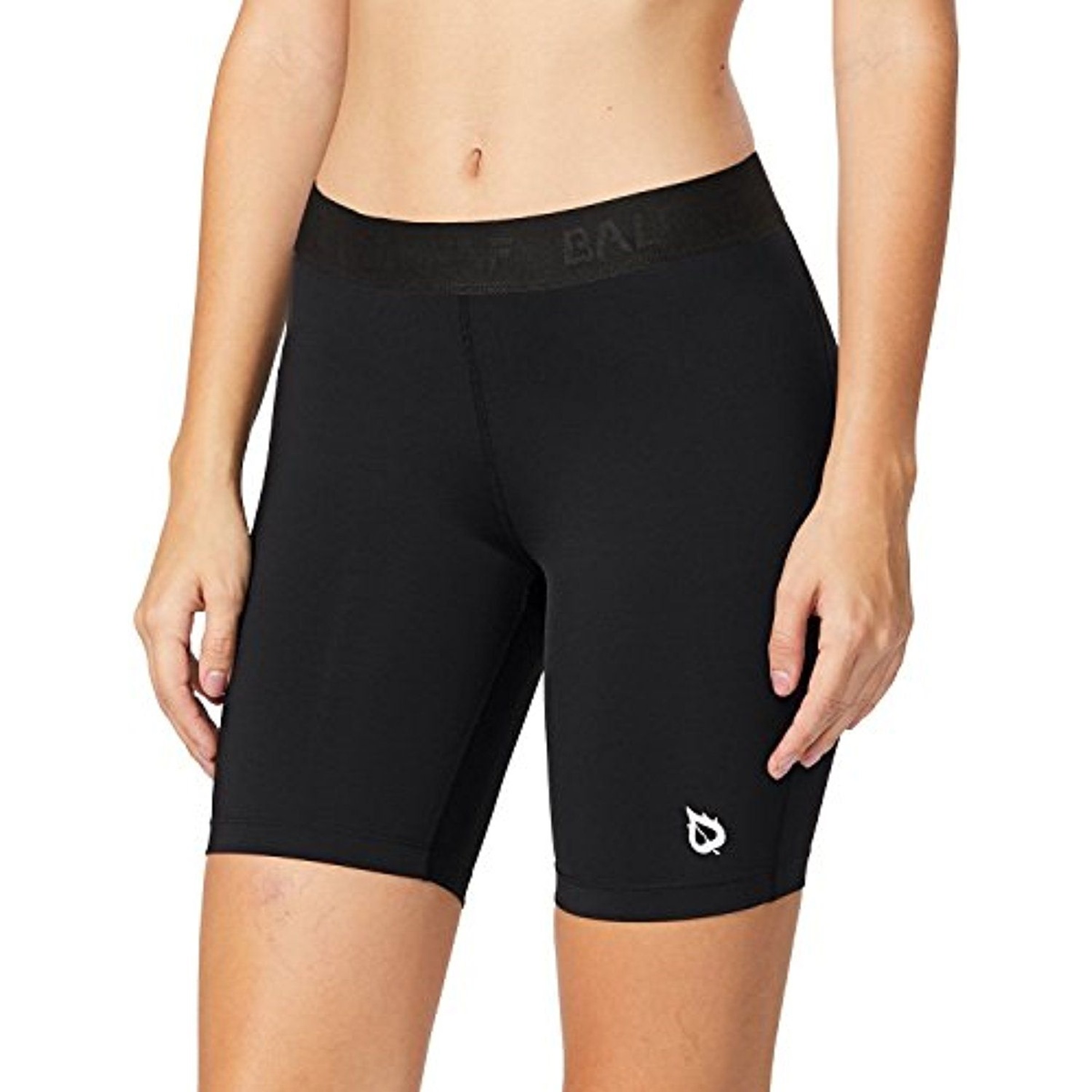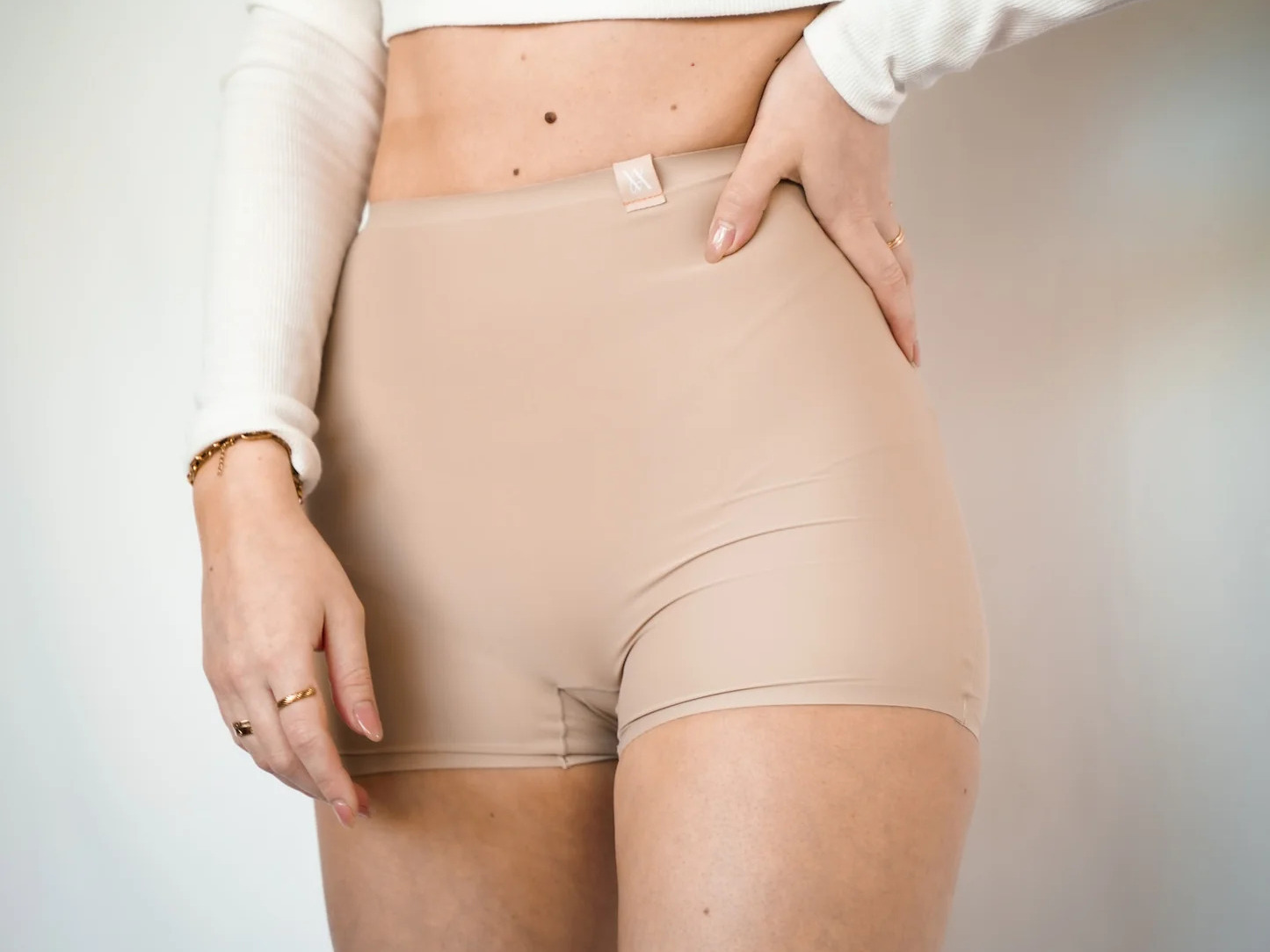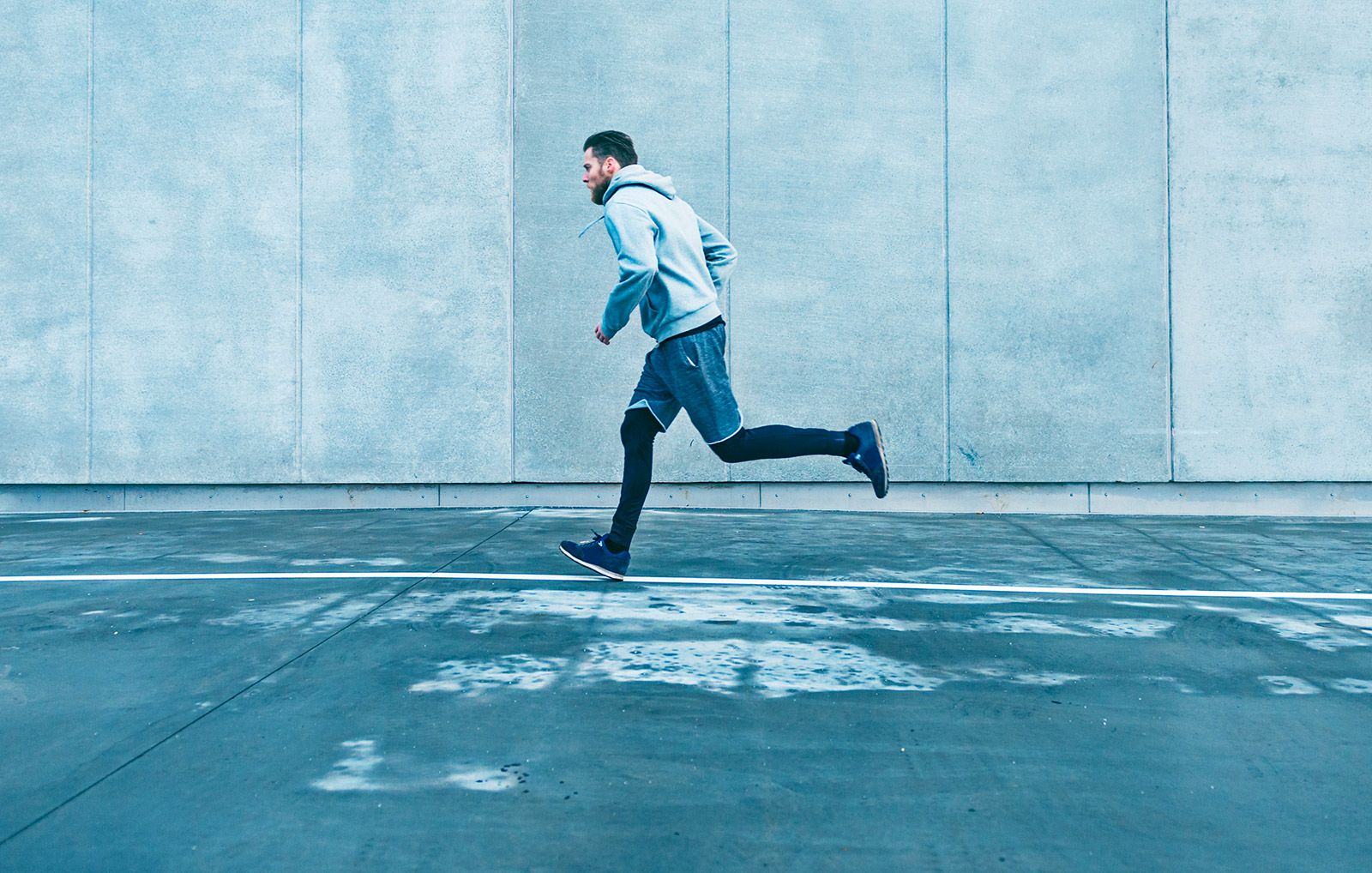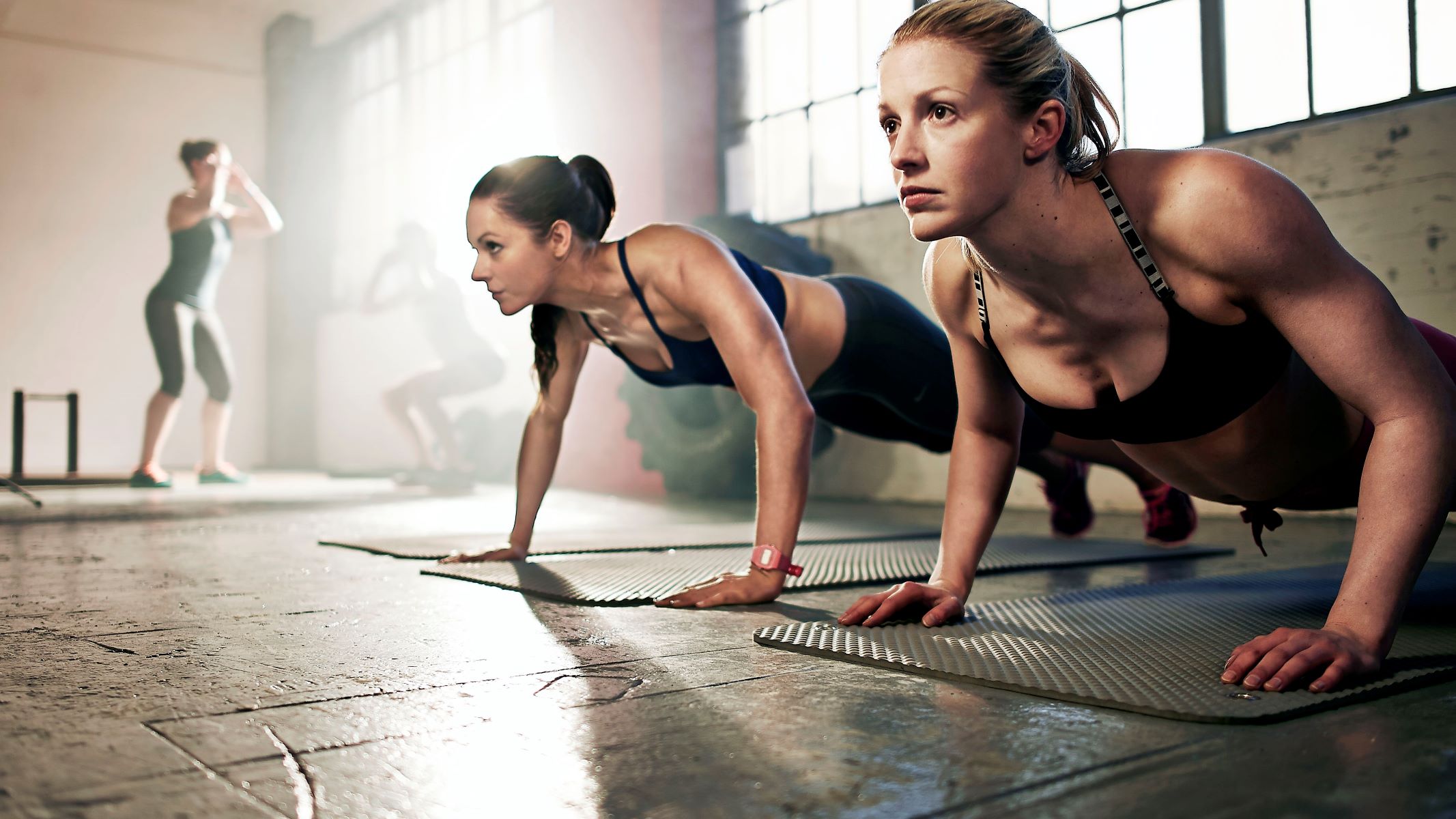

Featured
What Should I Wear For Workout Clothes
Modified: August 19, 2023
Discover the latest featured workout clothes and find out what you should wear for your exercise routine. Stay stylish and comfortable with our top picks!
Introduction
When it comes to working out, wearing the right clothes can make a significant difference. Proper workout attire not only ensures comfort and flexibility, but it also enhances performance and reduces the risk of injury. Whether you”re a seasoned athlete or embarking on a fitness journey, investing in the right workout clothes is crucial.
Choosing the right workout clothes involves considering various factors such as material, fit, and specific activities. Breathable fabrics that wick away sweat, optimal fits that allow for ease of movement, and layering options for different exercise routines are all essential aspects to consider.
Additionally, workout clothes should not only be functional but also inspire confidence and motivation. Feeling good in your workout clothes can boost self-esteem and contribute to a positive mindset during exercise.
In this article, we will explore the importance of proper workout attire and delve into the factors to consider when choosing workout clothes. We will discuss different material and fabric options, the right fit for various body types, and the importance of layering for different types of workouts. Additionally, we will provide insights on specific considerations for activities such as running, yoga, and weightlifting, and highlight essential workout clothing items for your wardrobe.
So, whether you”re hitting the gym, heading out for a run, or practicing yoga, read on to discover how the right workout clothes can enhance your performance and help you achieve your fitness goals.
Importance of Proper Workout Clothes
Choosing the right workout clothes is more than just about looking stylish at the gym. It plays a crucial role in overall performance, comfort, and safety during exercise. Here are some key reasons why investing in proper workout attire is important:
- Comfort: Wearing comfortable workout clothes allows for better freedom of movement, reducing any restrictions that may hinder your workout. Restrictive clothing can limit your range of motion and affect your form, leading to suboptimal performance and increased risk of injury.
- Moisture-wicking: Engaging in physical activities causes you to sweat, and wearing clothes that are moisture-wicking helps to keep you dry. Fabrics like polyester and nylon draw moisture away from your skin and onto the fabric’s surface, where it evaporates quickly. This helps regulate your body temperature and prevents discomfort caused by wet, clingy clothing.
- Temperature regulation: Depending on the weather and your exercise intensity, your body temperature can fluctuate. Workout clothes made from breathable fabrics allow for proper air circulation, helping to regulate your body temperature during workouts.
- Performance enhancement: The right workout clothes can enhance your performance by providing the right support and flexibility. Compression garments, for example, can improve blood flow, reduce muscle fatigue, and speed up recovery. Clothes with stretchable fabrics ensure unrestricted movements, allowing you to perform your exercises with efficiency and precision.
- Protection: Certain workout activities, such as outdoor running or cycling, expose you to environmental elements. Proper workout clothes can provide protection against UV rays, harsh weather conditions, and abrasions. Look for clothing with built-in sun protection and strategic padding or reinforcement in high-impact areas to minimize the risk of injuries.
Overall, investing in proper workout clothes is an essential aspect of any fitness routine. By prioritizing comfort, moisture-wicking capabilities, temperature regulation, performance enhancement, and protection, you can optimize your workouts and ensure a safe and enjoyable exercise experience.
Factors to Consider When Choosing Workout Clothes
Choosing the right workout clothes goes beyond picking something that looks good on you. It involves considering several important factors to ensure optimal performance and comfort. Here are some key factors to keep in mind when selecting workout attire:
- Material and Fabric: One of the most crucial factors to consider is the material and fabric of the workout clothes. Look for fabrics that are breathable, moisture-wicking, and quick-drying. Cotton, while comfortable, tends to absorb moisture and can become heavy and clingy during intense workouts. Instead, opt for synthetic materials like polyester, nylon, or spandex blends that offer superior moisture management.
- Fit: The fit of your workout clothes significantly impacts your range of motion and overall comfort. Choose clothing that allows for easy movement without being too tight or too loose. Additionally, consider the specific activity you will be engaging in. For activities that require lots of bending and stretching, opt for form-fitting clothes, while activities with high impact may necessitate more supportive and structured garments.
- Layering: Layering is essential for adapting to different exercise conditions and maintaining comfort. Having a combination of moisture-wicking base layers, insulating mid-layers, and protective outer layers allows you to adjust your clothing according to the temperature and intensity of your workouts. Layering also helps manage sweat and can prevent overheating or getting too cold during variations in exercise intensity.
- Specific Activity Considerations: Different types of workouts have specific clothing requirements. For example, for running or high-impact activities, look for clothes that offer good support and reduce bounce. For yoga or Pilates, consider clothes with stretchability and moisture-wicking capabilities for maximum flexibility. Weightlifting may require clothing with a looser fit and reinforced seams to accommodate the range of motion and added resistance.
- Comfort and Range of Motion: The comfort and range of motion that your workout clothes offer are essential for an effective exercise session. Ensure that the clothing allows you to move freely and comfortably without any restrictions. Pay attention to features like flat seams to minimize chafing and irritation, tag-free labels for added comfort, and strategically placed ventilation panels to facilitate air circulation.
By considering these factors when choosing your workout attire, you can ensure that you have the right clothing to support your exercises, enhance your performance, and keep you comfortable throughout your workout sessions.
Material and Fabric Options
When it comes to workout clothes, the choice of material and fabric can greatly impact your performance and comfort during exercise. Here are some commonly used materials and fabric options for workout attire:
- Polyester: Polyester is a popular choice for workout clothing due to its durability and moisture-wicking properties. It helps to draw sweat away from the body, keeping you dry and comfortable during intense workouts. Polyester is also known for its quick-drying capabilities, making it ideal for activities that generate a lot of sweat.
- Nylon: Nylon is another synthetic fabric commonly used in workout clothes. It is lightweight, breathable, and has excellent stretchability, allowing for unrestricted movement during exercises. Nylon is also known for its moisture-wicking abilities, helping to keep you cool and dry during sweaty workouts.
- Spandex: Spandex, also known as elastane, is a stretchy fabric that provides excellent flexibility and range of motion. It is often blended with other materials to offer better shape retention and form-fitting qualities. The addition of spandex in workout clothing allows for a snug fit without compromising comfort or movement.
- Bamboo: Bamboo fabric is a sustainable and eco-friendly option for workout attire. It is soft, breathable, and naturally moisture-wicking, making it comfortable to wear during workouts. Bamboo fabric also has antibacterial properties, which can help reduce odors associated with sweating.
- Merino Wool: Merino wool is a natural fiber that is incredibly soft, lightweight, and breathable. It is known for its exceptional moisture-wicking and thermoregulatory properties, making it suitable for a wide range of temperatures and activities. Merino wool is also naturally odor-resistant and has excellent insulating qualities.
- Cotton: While cotton is a widely used and comfortable fabric, it is not typically recommended for intense workouts. Cotton absorbs moisture, which can make it feel heavy and clingy during exercise. However, for low-intensity activities or leisurely workouts, cotton can still be a comfortable option.
When selecting workout clothes, consider the type of activity you will be engaging in and the climate in which you will be exercising. Opt for fabrics that offer breathability, moisture-wicking properties, and flexibility. A combination of synthetic materials like polyester or nylon, blended with spandex for stretchability, is often a reliable choice. However, for those seeking sustainable or natural options, bamboo and merino wool offer excellent alternatives.
Ultimately, choosing the right material and fabric for your workout clothes will contribute to your overall comfort, performance, and enjoyment during exercise.
Choosing the Right Fit
When it comes to workout clothes, finding the right fit is essential for both comfort and performance. Ill-fitting clothes can restrict your movement, cause discomfort, and impact your confidence during exercise. Here are some tips to help you choose the right fit for your workout attire:
- Avoid overly tight or too loose clothing: Finding the balance between tight and loose is crucial. Clothes that are too tight can restrict your movement and hinder your performance, while clothes that are too loose can get in the way and create distractions. Opt for clothes that allow for sufficient freedom of movement without feeling restrictive or baggy.
- Consider your body type: Different body types may require specific considerations for finding the right fit. Pay attention to factors such as the length of the inseam, the width of the waistband, and the placement of seams. Look for clothing options that cater to your body type to ensure a comfortable and flattering fit.
- Try before you buy: Whenever possible, try on workout clothes before making a purchase. This allows you to assess the fit, stretchability, and comfort of the garments. Pay attention to how the clothes feel when you move, whether there is any pulling or discomfort, and if they stay in place during exercise.
- Consider the specific activity: Different types of workouts may require different fits. For activities that involve a lot of bending and stretching, such as yoga, look for form-fitting clothes that allow for ease of movement. On the other hand, for activities that involve high impact or weightlifting, you might prefer looser-fitting clothing that provides support and flexibility.
- Check for adjustable features: Some workout clothes come with adjustable features like drawstrings, waistbands, or straps, allowing you to customize the fit to your liking. These adjustable elements can be helpful in achieving a personalized fit that suits your body shape and preferences.
- Consider your comfort level: Ultimately, the fit of your workout clothes should make you feel comfortable and confident. If you find yourself constantly readjusting or feeling self-conscious about your clothing during exercise, it may be a sign that the fit is not right for you. Trust your instincts and choose clothing that makes you feel good.
Remember, the right fit will vary depending on personal preferences, body type, and the type of activity you’re engaging in. Strive to find workout clothes that allow you to move freely, provide the desired level of support, and make you feel confident and comfortable while exercising.
Layering for Different Types of Workouts
Layering your workout clothes is a smart approach that allows you to adapt to different conditions and intensities during your exercise routine. It provides flexibility in managing your body temperature, maximizing comfort, and ensuring optimal performance. Here’s a guide to layering for different types of workouts:
- Base Layer: The base layer is the layer closest to your skin. It should be made of moisture-wicking fabric to keep you dry by drawing sweat away from your body. Opt for lightweight, breathable materials like polyester or merino wool. The base layer is crucial in regulating your body temperature and preventing discomfort caused by excessive sweat buildup.
- Mid-Layer: The mid-layer is intended to provide insulation and retain body heat in colder temperatures. This layer can be a lightweight, long-sleeved top or a fleece jacket. Look for fabrics like polyester or microfleece that provide warmth without adding bulk or restricting movement. The mid-layer works by trapping air between the base and outer layers, helping to keep you warm while allowing breathability.
- Outer Layer: The outer layer serves as protection against wind, rain, or snow. It should be made of a waterproof or water-resistant material to shield you from the elements. A breathable jacket with ventilation options is ideal to prevent overheating. Consider features like a hood, sealed seams, and adjustable cuffs for added protection and customization. The outer layer should be roomy enough to accommodate the base and mid-layers comfortably.
- Bottoms: For colder temperatures or low-intensity workouts, consider wearing thermal or fleece-lined leggings or pants as a base layer. If necessary, add a looser-fitting pair of pants or shorts over them for added warmth. In milder conditions, you can opt for lightweight, moisture-wicking bottoms. Look for options with an adjustable waistband or drawstring for a customizable fit.
- Accessories: Don’t forget to layer your accessories as well. For colder temperatures, add a beanie or headband to protect your ears, as well as gloves or mittens to keep your hands warm. Consider wearing moisture-wicking socks and investing in proper footwear that provides support and protection for your specific activity.
Layering allows you to add or remove clothing as needed, maintaining a comfortable body temperature throughout your workout. It is especially important when exercising in fluctuating temperatures or engaging in activities with varying intensities. Experiment with different layering combinations to find what works best for you and your specific workout needs.
Considerations for Specific Activities (Running, Yoga, Weightlifting, etc.)
Choosing the right workout clothes goes beyond the basics of material and fit. Different types of exercises have specific requirements and considerations for optimal performance and comfort. Here are some key factors to keep in mind for specific activities:
- Running: When it comes to running, prioritizing moisture-wicking and breathable materials is essential. Look for lightweight, comfortable tops and shorts or leggings that allow for a full range of motion. Opt for running-specific socks for added cushioning and support, and choose shoes with proper shock absorption and stability to minimize the risk of injuries.
- Yoga: Flexibility and ease of movement are key for practicing yoga. Choose form-fitting tops and bottoms that don’t restrict your range of motion. Look for fabrics with stretch properties like spandex to accommodate various poses. Avoid loose or baggy clothing that may get in the way or distract you during your practice.
- Weightlifting: Weightlifting requires clothing that offers a balance of support and flexibility. Choose tops that allow for a complete range of motion, without being overly loose. Consider wearing supportive compression wear on areas like the joints or muscles that need extra stability. Opt for bottoms that allow for unrestricted movement, such as shorts or leggings with a flexible waistband.
- Cycling: Cycling often involves long hours in the saddle, demanding clothing that provides comfort and performance. Look for cycling-specific jerseys and shorts made from moisture-wicking and breathable fabrics. For longer rides, padded cycling shorts can provide added cushioning and reduce chafing. Additionally, consider wearing a lightweight, aerodynamic jacket for wind and weather protection.
- HIIT (High-Intensity Interval Training): HIIT workouts involve bursts of intense exercise followed by short rest periods. Opt for moisture-wicking clothing that allows for quick evaporation of sweat. Choose clothing that is lightweight and breathable to prevent overheating. Consider wearing supportive shoes that offer stability and cushioning for the impact associated with HIIT exercises.
- Dance: Dance workouts require clothing that allows for fluid movement and expression. Look for lightweight, breathable material options that offer flexibility. Choose form-fitting tops and bottoms that stay in place during dynamic movements. Consider leggings or shorts with moisture-wicking properties to keep you dry and comfortable throughout your dance routine.
By considering the specific requirements of each activity, you can select workout clothes that enhance your performance and comfort. Always prioritize freedom of movement, moisture-wicking properties, and adequate support to ensure a successful and enjoyable exercise experience.
Essential Workout Clothing Items
Building a wardrobe with essential workout clothing items can significantly contribute to your comfort, performance, and confidence during exercise. Here are some must-have items to consider for your workout attire:
- Moisture-Wicking Tops: Invest in moisture-wicking tops made from materials like polyester or nylon. These fabrics pull moisture away from your skin, keeping you dry and comfortable during intense workouts. Look for options with breathable panels and mesh inserts for added ventilation.
- Performance Bras: For women, a well-fitted sports bra is crucial for proper support during exercise. Look for bras with moisture-wicking properties and adjustable straps to customize the fit. Depending on your activity, choose between low, medium, or high impact bras to ensure adequate support.
- Flexible Bottoms: Opt for flexible bottoms like leggings or shorts that allow for a full range of motion. Look for materials with stretch properties like spandex or elastane blends. Consider options with a wide waistband for comfort and a secure fit.
- Comfortable Sneakers: Invest in a pair of well-fitting, supportive athletic shoes designed for your specific activity. Look for features like good cushioning, stability, and proper traction. Wearing the right footwear can prevent discomfort, reduce the risk of injuries, and enhance your performance.
- Sweat-Wicking Socks: Choose moisture-wicking socks to keep your feet dry and prevent blisters. Look for options with cushioning in high-impact areas and a snug fit that doesn’t bunch up or slide down during your workouts.
- Layering Pieces: Include layering pieces in your workout wardrobe for temperature regulation. Invest in lightweight jackets, hoodies, or vests made from breathable and water-resistant materials. These can be easily layered over your base and mid-layers when needed.
- Headbands and Sweatbands: Keep sweat out of your eyes and hair with headbands or sweatbands. They not only help to control sweat but also add a stylish touch to your workout outfit. Look for moisture-wicking options that stay in place during vigorous exercise.
- Accessories: Don’t forget to accessorize as needed. Depending on your activities, consider items like workout gloves for weightlifting, a hat or visor for outdoor workouts, or a fitness tracker to monitor your progress.
Having these essential workout clothing items in your wardrobe ensures that you are well-equipped for a variety of exercises and activities. Remember to choose items that prioritize comfort, functionality, and performance to get the most out of your workouts.
Tips for Purchasing and Maintaining Workout Clothes
Purchasing and maintaining workout clothes is an important aspect of ensuring their longevity and optimal performance. Here are some helpful tips to consider when buying and taking care of your exercise attire:
- Invest in quality: While it may be tempting to opt for inexpensive workout clothes, investing in higher-quality items can save you money in the long run. Quality workout clothing tends to have better durability, retains its shape over time, and offers enhanced performance features like moisture-wicking and stretchability.
- Try before buying: Whenever possible, try on workout clothes before making a purchase. Different brands and styles may have variations in fit and sizing, so it’s important to find what works best for your body type and preferences. This can help prevent the hassle of returns or exchanges.
- Read reviews: Research different brands and read customer reviews to get an idea of the quality and performance of the clothing. Pay attention to factors like durability, comfort, and whether the items hold up well after repeated washing and use.
- Follow care instructions: Each piece of workout clothing may require specific care instructions. Read and follow the manufacturer’s guidelines for washing, drying, and storing your garments. This can help prolong their lifespan and maintain their performance qualities.
- Wash promptly after each use: Sweat and bacteria can break down the fabric of your workout clothes over time. To prevent odor and maintain the integrity of the fabric, wash your workout attire promptly after each use. Avoid leaving sweaty clothing in a gym bag or hamper for extended periods.
- Use gentle detergents: Consider using mild, gentle detergents that are free of harsh chemicals and fragrances. Harsh detergents can strip away the moisture-wicking properties of fabrics and cause them to lose their effectiveness. Additionally, avoid using fabric softeners, as they can leave residue on the fabric and decrease breathability.
- Avoid excessive heat: High heat from the dryer or iron can damage the elasticity and performance qualities of your workout clothes. Whenever possible, air-dry your clothing or use the lowest heat setting on your dryer. This helps prevent shrinkage and maintains the shape and fit of your garments.
- Rotate your clothing: To prevent excessive wear and tear, rotate your workout clothing instead of relying on a few favorite pieces. This allows the fabric to recover and maintain its shape between wears. It also helps distribute the stress on the clothing, extending its lifespan.
By following these tips, you can make informed purchasing decisions and ensure that your workout clothes remain in excellent condition. Proper care and maintenance will not only prolong the life of your clothing but also contribute to your comfort and performance during exercise.
Conclusion
Choosing the right workout clothes is crucial for a successful and comfortable exercise experience. Proper attire not only enhances performance but also reduces the risk of injuries and provides overall comfort. By considering factors such as material, fit, and specific activity needs, you can select workout clothes that meet your requirements and support your fitness goals.
Remember to opt for moisture-wicking fabrics like polyester or nylon to keep you dry during intense workouts. Focus on finding the right fit that allows for full range of motion and comfort without being too tight or loose. Layering is essential for temperature regulation, and it’s important to consider the specific requirements of each activity when selecting your workout attire.
Essential items like moisture-wicking tops, performance bras, flexible bottoms, and comfortable sneakers should be the foundation of your workout wardrobe. Accessorize as needed with sweatbands, gloves, headbands, and other items that enhance your performance and comfort.
When purchasing workout clothes, invest in quality items that have the durability to withstand regular use. Read reviews and try on different brands and styles to find what works best for you. Follow the care instructions provided by the manufacturer to maintain the longevity and performance qualities of your workout clothing.
In conclusion, by prioritizing the factors discussed in this article, you can ensure that your workout clothes enhance your performance, protect you from the elements, and keep you comfortable and confident throughout your exercise routine. So, go ahead and outfit yourself with the right workout attire and get ready to achieve your fitness goals with style and comfort!
